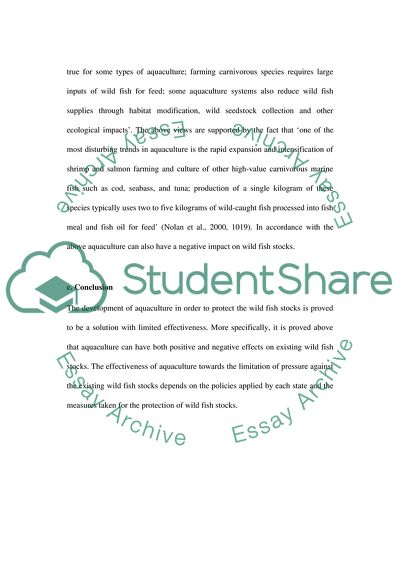Cite this document
(Effects that Aquaculture Can Have on Wild Fish Stocks Assignment Example | Topics and Well Written Essays - 2000 words - 1, n.d.)
Effects that Aquaculture Can Have on Wild Fish Stocks Assignment Example | Topics and Well Written Essays - 2000 words - 1. https://studentshare.org/environmental-studies/1710382-aquaculture
Effects that Aquaculture Can Have on Wild Fish Stocks Assignment Example | Topics and Well Written Essays - 2000 words - 1. https://studentshare.org/environmental-studies/1710382-aquaculture
(Effects That Aquaculture Can Have on Wild Fish Stocks Assignment Example | Topics and Well Written Essays - 2000 Words - 1)
Effects That Aquaculture Can Have on Wild Fish Stocks Assignment Example | Topics and Well Written Essays - 2000 Words - 1. https://studentshare.org/environmental-studies/1710382-aquaculture.
Effects That Aquaculture Can Have on Wild Fish Stocks Assignment Example | Topics and Well Written Essays - 2000 Words - 1. https://studentshare.org/environmental-studies/1710382-aquaculture.
“Effects That Aquaculture Can Have on Wild Fish Stocks Assignment Example | Topics and Well Written Essays - 2000 Words - 1”. https://studentshare.org/environmental-studies/1710382-aquaculture.


